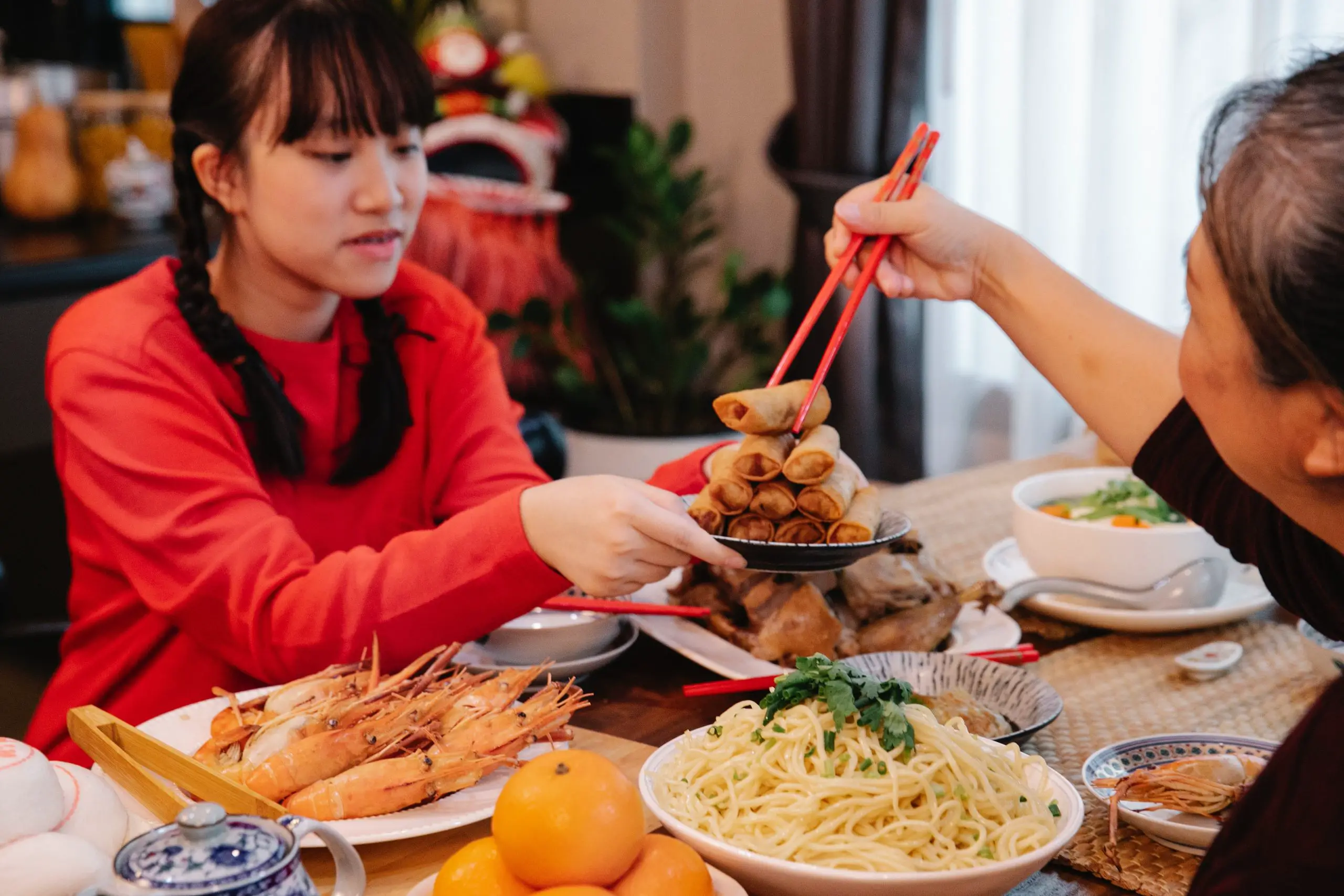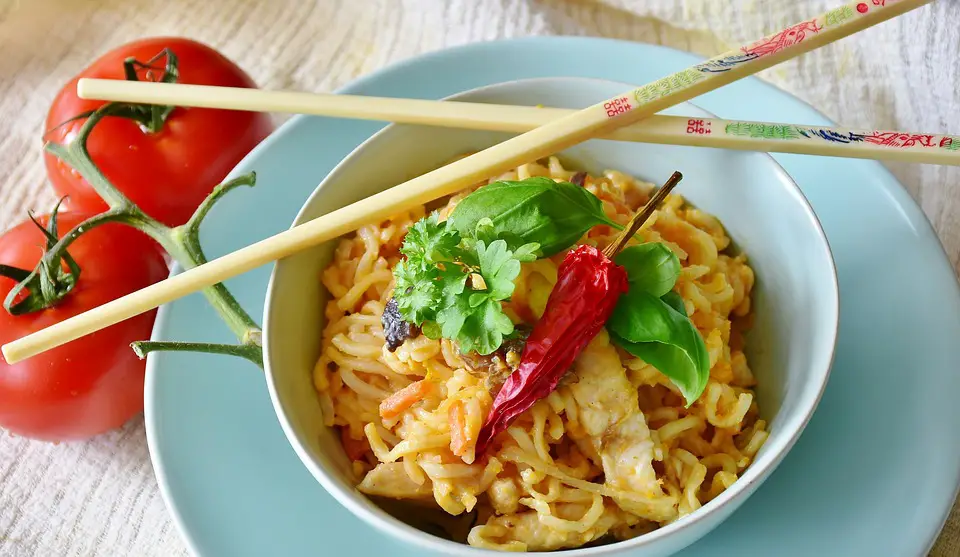Do you wish to know how to reheat Chinese food? Stay with us, as we will share numerous techniques. The problem with leftover Chinese cuisine is that it smells bad because microwave reheating makes everything mushy.
Once the meat or seafood is refrigerated and heated the next day, the crunchiness is readily lost. What should we do about the problem of reheating Chinese food?
First, the kitchen utensil or appliance you use to heat the food isn’t necessarily the most important factor. Here is the ideal method for reheating Chinese food, so you don’t wind up with rubbery meat and dry rice.

Can you Reheat Chinese Takeaway in the Oven, Pan, or Microwave?
The answer is yes; you can safely reheat Chinese takeaways in the Oven, Pan, or Microwave. A Chinese takeaway is a great option whether you are trying to save money or want a convenient meal. Many takeouts come in generous portions, making them a great value.
Reheating Chinese takeaway is easy, and you can use a variety of appliances to do so. You can reheat leftovers in the microwave or oven. Depending on the type of food, you may have to choose a particular appliance to reheat it properly. Using a microwave can ruin the flavor and texture of some foods.
If you want to reheat your Chinese takeaway on the stove, you will need to use a non-stick pan. Heat a small amount of oil over medium heat. Add the food and stir it until it is evenly heated. This will remove cold spots and allow the reheated food to reach the proper temperature.
A stovetop method is a great option for reheating foods with a lot of moisture. However, reheating foods such as meat and breaded items do not fare well in the microwave.
What is the Correct Method of Storing Chinese Takeaways?
Never put a batch of hot, freshly prepared food into a cold refrigerator. The heat from the dish will gradually increase the refrigerator’s internal temperature. This will not only encourage the growth of bacteria on your leftovers but also compromise the safety of the other foods in the refrigerator. Your leftovers should be cooled for a maximum of 3–4 hours. It is simple to accomplish this by taking the food out of the hot dishes and placing it in the containers of your choice. When the food reaches room temperature (around 20°C), cover it and let it cool.
Additionally, you should only keep leftovers in the fridge for up to two days. If you can freeze some, do so, but in either case, make sure to adhere to our warming instructions.
It’s preferable to keep your refrigerator between 3°C and five °C to prevent food spoilage. Bacteria will develop more quickly at hotter temperatures, which might damage your food. Frost, which harms food and taints it, can form if the temperature drops too far.
What are the Precautions that Must be Taken When Freezing Chinese Food?
There are a few essential measures to follow when freezing Chinese food to ensure the food is properly prepared and kept. Before cooking, make careful to thaw the food properly. You may accomplish this by leaving it out overnight or microwaving it briefly on low power. Before freezing, make sure that all of the ingredients have been thoroughly mixed. By doing this, you can ensure that the tastes are baked into the food evenly. Third, place the food in an airtight bag or container and freeze it. Doing this can prevent freezer burn and increase the food’s shelf life.
Lastly, write the date the food was frozen in the container or bag. This will make it easier for you to maintain tabs on how long the food has been in storage and when it should be consumed.
What are the Top Chinese Takeaway Dishes?
We’ve put together a list of some of the top Chinese food options, whether you want to order delivery or prepare a dinner at home. You will find it much simpler to decide what to eat if you do this (or service if you have guests coming over).
Chinese Noodles
The Cantonese term Chow Mein means “fried noodles.”
Boiling noodles, diced chicken, beef, pig, seafood, and a variety of vegetables make up this dish.
Some of the most popular ones are green peppers, carrots, celery, spring onions, and red onions.
You can eat the dish alone or even with a mouthwatering and fragrant Chinese curry on the side.
Hot Pot
One of the most well-liked foods in China, particularly in the provinces of Szechuan and Chongqing, is the hot pot, which has a flavorful broth.
The dish is a boiling pot of meat- or vegetable-based broth on a gas stove.
You can choose the condiments and other food items to include with it and add them individually to the boiling liquid.
The broth is the most crucial component of the recipe since it provides the flavor for all the meat and veggies added.
I advise choosing this interactive lunch if you want to share and socialize over a Chinese dish with friends and experience a different eating style.
Dumplings
Dumplings do not, in fact, only belong to Chinese cuisine.
More East Asian cuisines, including Japanese and Korean, and Central Asian cuisines, such as Afghan and Uzbek, contain them. No matter what, you must attempt the Chinese version.
Small dough wrappers filled with soft mutton stew, black pepper, spring onions, and other herbs make up these snacks.
It is a fantastic dish to keep your body warm during the winter. I enjoy soaking them in a bowl of warm, brothy soup, which works well in place of wonton soup.
What Kind of Oil do Chinese Restaurants Use for Deep Frying?
An oil with a high smoke point must be used for deep-frying food. Low-smoke point olive oil can burn and change the flavor of the food.
A vegetable oil’s smoke point is between 400 and 450 degrees Fahrenheit (204–232 degrees Celsius).
Deep-fried foods are best prepared with peanut oil because of their flavor and high smoke point of 450 degrees Fahrenheit (232 degrees Celsius).
The dish’s taste is unaffected by canola oil because it has a neutral flavor and a smoke point of 400 degrees Fahrenheit (204 degrees Celsius).
Finally, rice bran oil, which has a high smoke point of 490 degrees and is a common cooking oil in Asia, deserves mention.
How can I Tell if my Leftover Chinese is Bad?
As I previously stated, it is impossible to determine whether the Chinese food you eat has become contaminated with dangerous bacteria. But there is just one method.
Your Chinese leftovers need to be inspected for odor after being thawed and heated. Food that has gone bad and becomes unsafe will undoubtedly start to smell bad and oily. You can conduct a taste test if it doesn’t feel any different than when it was frozen.
Using your instincts is the best course of action in this situation. Throw out the food even if it doesn’t smell strange, but you suspect it tastes off.
Its Texture Appears to Differ
Sometimes damaged food may not be immediately apparent.
However, you might want to quit eating them if your leftover noodles seem clumped or the chicken curry you ordered feels chewier.
It Develops a Pungent Smell
If your Chinese takeout starts to smell stale and unpleasant, you may be sure it’s no longer edible.
There is Staining
Your meal is probably going to turn brown if bacteria settle there. If leftover food starts to discolor, throw it away immediately to prevent food poisoning.
How to Eat Healthy with Chinese Food?
Americanized Chinese takeout should be treated as fast food. Similar to the Big Mac, it’s acceptable to indulge in it occasionally for comfort but never too frequently. This applies to dishes like Chow Mein, Egg Fuyong, General Tso’s Chicken, and fried rice.
If you are watching your salt intake, try avoiding dishes marked “with black bean sauce.”
Give them a break! Follow the northern Chinese culture and dip your dumplings in vinegar and garlic. Some meals, like dumplings, frequently have dipping sauces high in sodium.
No matter how delicious it may taste, Do not eat the sauce left in the dish. The majority of the dish’s fat and sodium are present!
Chinese restaurants frequently use a lot of MSG in their soups.
Avoid ordering anything with eggplant if you’re watching your fat intake. Due to their porous structure, eggplants readily absorb a lot of oil when deep-fried and then added to sauces with additional oil.
In my opinion, the healthiest way to eat hotpot is “bland soup + dipping sauce on the side.” On the other hand, the salt and oil in Sichuan-style spicy hotpot are abundant and can readily stick to vegetables. You have complete control over your diet in this way.
Traditional Chinese cuisine has long been thought to work in tandem with traditional Chinese medicine and positively impact health outcomes and longevity. Traditional Chinese cuisine has undergone significant development and qualitative transformation due to quirky eating habits during the past few decades. This food and eating habits revolution is fueled by China’s massive population, swift socioeconomic development, changing lifestyle, and impact on the world stage. Inevitably, these dietary changes are significantly affecting public health in China and globally.
Conclusion
Whether you want to enjoy a quick and easy meal or keep leftover Chinese takeaway fresh and flavorful, you can reheat it safely in the oven. But first, you need to consider the type of food you want to reheat. Some dishes, like wontons, require boiling. Alternatively, you can reheat fried rice, noodles, and fried vegetables. The key to reheating Chinese takeaway in the oven is ensuring the dish gets evenly heated.
Unlike microwaves, ovens are a better choice for reheating foods with a crunchy texture. However, ovens aren’t as efficient as microwaves. And the oven takes longer to reheat. And there’s a chance that you’ll overheat your food in the oven.
